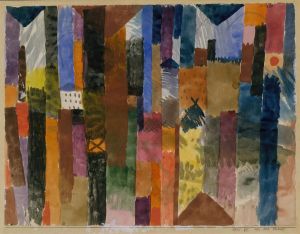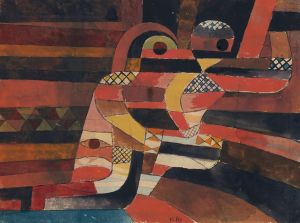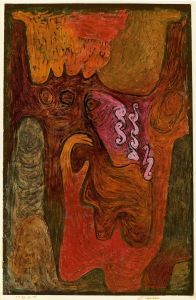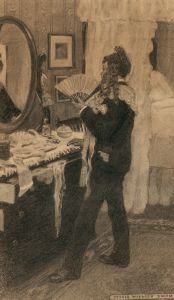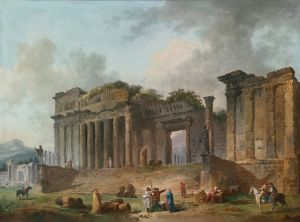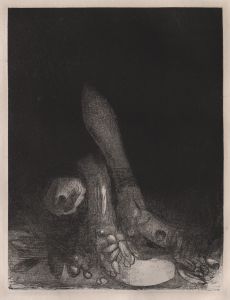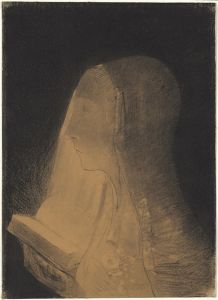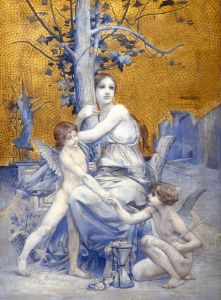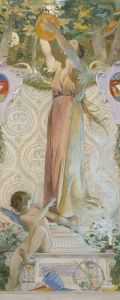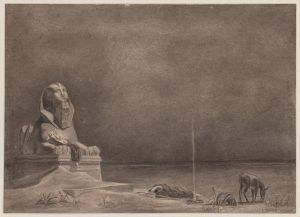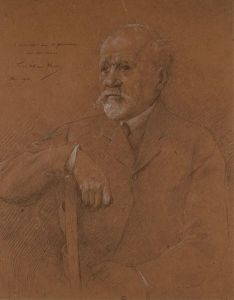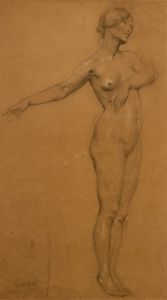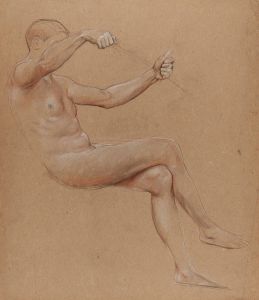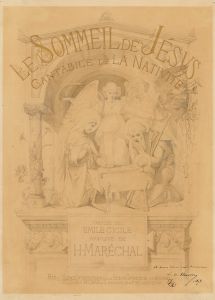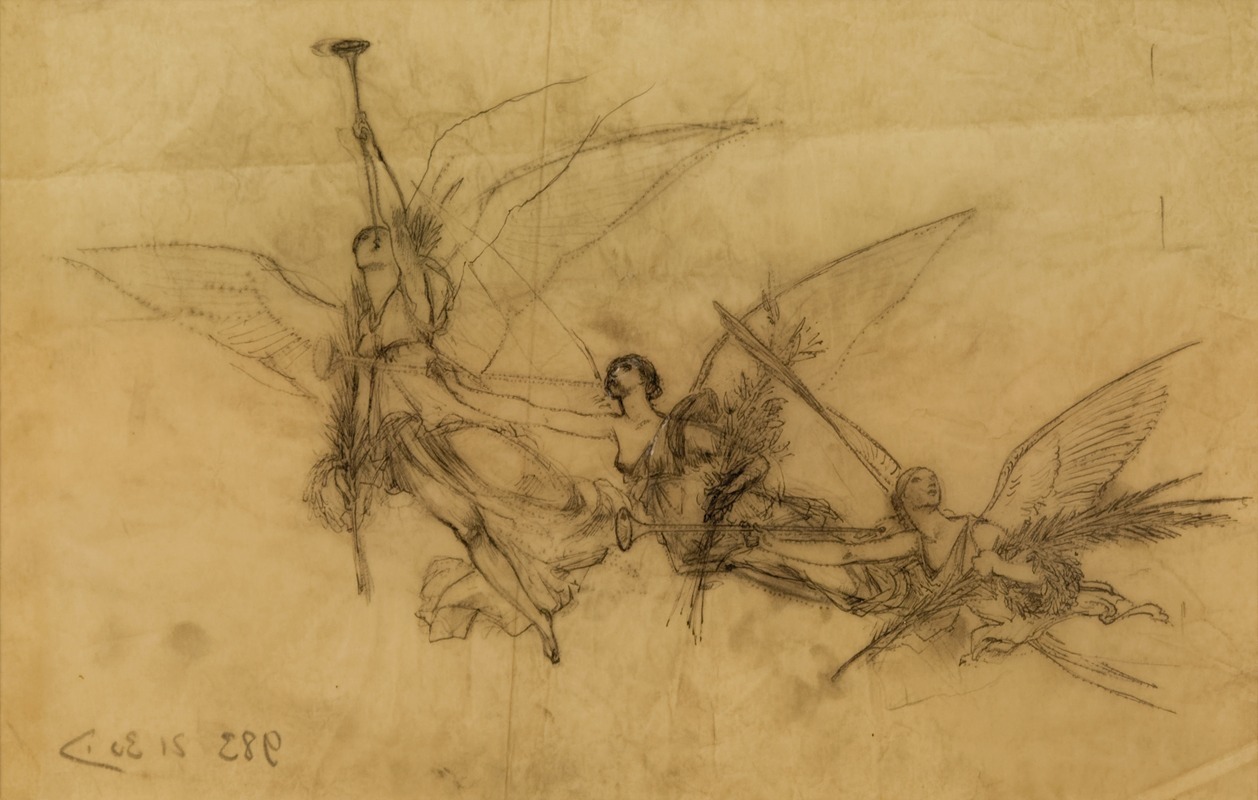
Étude de figures volantes
A hand-painted replica of Luc-Olivier Merson’s masterpiece Étude de figures volantes, meticulously crafted by professional artists to capture the true essence of the original. Each piece is created with museum-quality canvas and rare mineral pigments, carefully painted by experienced artists with delicate brushstrokes and rich, layered colors to perfectly recreate the texture of the original artwork. Unlike machine-printed reproductions, this hand-painted version brings the painting to life, infused with the artist’s emotions and skill in every stroke. Whether for personal collection or home decoration, it instantly elevates the artistic atmosphere of any space.
Étude de figures volantes, translated as "Study of Flying Figures," is a notable work by the French artist Luc-Olivier Merson. Merson, born on May 21, 1846, in Paris, was a prominent painter and illustrator known for his historical and religious subjects, as well as his contributions to the Symbolist movement. He studied under Gustave Chassevent and Isidore Pils at the École des Beaux-Arts in Paris, where he honed his skills and developed a distinctive style that combined meticulous detail with imaginative compositions.
The painting Étude de figures volantes is an example of Merson's skill in capturing dynamic movement and ethereal qualities. Although specific details about the creation date and the exact context of this particular work are not widely documented, it is consistent with Merson's broader body of work, which often explored themes of mythology, religion, and allegory. The title itself suggests a focus on the study or exploration of figures in flight, which may imply a preparatory work or a conceptual exploration rather than a finished piece intended for public exhibition.
Merson's career was marked by several significant achievements. He won the prestigious Prix de Rome in 1869, which allowed him to study at the Villa Medici in Rome. This experience profoundly influenced his artistic development, exposing him to classical art and Renaissance masterpieces. Upon his return to France, Merson continued to build his reputation, receiving commissions for various public and private projects.
One of his most famous works is the painting "Rest on the Flight into Egypt" (1879), which showcases his ability to blend realism with a dreamlike quality. This painting, like many of his others, demonstrates his meticulous attention to detail and his skill in creating atmospheric effects. Merson's work was well-received during his lifetime, and he was awarded the Legion of Honour in 1889.
In addition to his paintings, Merson was also an accomplished illustrator. He contributed illustrations to various books and publications, including editions of works by authors such as Victor Hugo and Edgar Allan Poe. His illustrations often reflected the same themes and stylistic elements found in his paintings, further establishing his reputation as a versatile and imaginative artist.
Merson's influence extended beyond his own work, as he also served as a professor at the École des Beaux-Arts, where he mentored a new generation of artists. His legacy is preserved in various museums and collections, including the Musée d'Orsay in Paris, which houses several of his works.
While specific information about Étude de figures volantes may be limited, it is clear that this work fits within the broader context of Luc-Olivier Merson's artistic exploration of movement, mythology, and the ethereal. His contributions to the art world remain significant, and his works continue to be appreciated for their technical skill and imaginative vision.





